DC Comics is trying something new. In the wake of their Rebirth initiative, the publisher has rapidly expanded its content to include diverse new imprints such as Young Animal, Wildstorm, Black Label, Ink, and Zoom. As their lineup expands, it can be hard to figure out what to pick up each week. That’s what the Comics Beat managing editor Alex Lu, entertainment editor Kyle Pinion, and contributor Louie Hlad are here to help you with.
THIS WEEK: Travel to Metropolis with Alex as he looks at The Man of Steel #1, the first issue of Brian Michael Bendis’ much anticipated Superman run. Then, revisit Justice League: No Justice as it wraps!
Note: the reviews below contain **spoilers**. If you want a quick, spoiler-free buy/pass recommendation on the comics in question, check out the bottom of the article for our final verdict.
 The Man of Steel #1
The Man of Steel #1
Writer: Brian Michael Bendis
Penciller: Ivan Reis
Inker: Joe Prado
Artist: Jay Fabok (pg 21-22)
Colorist: Alex Sinclair
Letterer: Cory Petit
Last month, Brian Michael Bendis made an auspicious debut at DC Comics and on Superman in Action Comics #1000. Ostensibly a celebration of our favorite blue boy scout (by the by, have you heard #thetrunksareback?!), Bendis proceeded to end Superman’s monumental party in the most comic book-y way possible: by having him stabbed through the heart by a mysterious new foe.
Ouch.
Back when Action Comics #1000 came out, I said that I generally enjoyed Bendis’ banter-driven storytelling, but chaffed at the concept and motivation behind this new villain, named Rogol Zaar. Much of that remains true here in The Man of Steel #1, Bendis’ official serialized debut on the Superman family of titles. Picking up from a ways before the events of Action Comics #1000, The Man of Steel #1 seeks to provide more shading for the events that lead up to Action Comics‘ shocking climax, establishing further motivation for Zaar while also hitting the reset button on Superman’s life in general to mixed results.
To start off with the good, the funny thing about The Man of Steel #1 is that there is very little fighting, but quite a lot of visual dynamism on display. Bendis has a prediliction towards wordy comics (see Alias), so it takes a certain kind of panel layout to make sure the story doesn’t feel too cramped. And while I can’t say most of the pages in The Man of Steel #1 have a ton of breathing room, it’s admirable how dynamic every panel on those pages feels. In particular, the work of colorist Alex Sinclair stands out throughout this book. Much of it is set at night or in space, giving him room to play with lighting effects that bring a sense of sublime ambiance to the story. As Rogaal Zaar stands in the presence of his universal masters, he’s bathed in a soft blue light, contrasting his anger with the landscape’s calm. As Superman takes in the sounds of Metropolis’ skyline, the evening city lights bathe him in a soft warm glow– an angel observing his kingdom.
In addition, I am still a big fan of Bendis’ dialogue choices themselves throughout The Man of Steel #1. While certainly not subtle, Bendis generally avoids the cardinal sin of dialogue scripting throughout this comic: using dialogue as exposition. Instead, Bendis focuses on using dialogue to showcase characters in a way that’s fun and endearing. For example, early on in the comic we see Gotham villains Killer Moth and Firefly having a standoff in a hotel room. Rather than playing the scene as a straight action scene that attracts the attention of Superman through the sight of carnage, Bendis and the story’s visual creative team drive the scene through body language and vocalization. We learn something novel about Superman as a character as Firefly tells Killer Moth that saying stuff like “where’s the money” attracts the attention of Superman’s superhearing– which it does. We even learn something funny and clever about Firefly as he tells Superman the reason why he came here was because he thought that no one would ever look for a villain who wanted to lay low in Superman’s territory. These moments are relatively inconsequential in the grand scheme of the story, but they establish characteristics and personality traits that keep us invested and interested in the world the story is creating.
Moreover, while much of the stakes of The Man of Steel #1 are small, that doesn’t make them any less interesting.Much of the issue focuses on Superman rescuing lives at a burning apartment building and putting out the fire. Apparently it’s the latest in a long line of arsons that have recently been plaguing Metropolis– clearly setting up for a longer plot thread– but the focus on rescuing a young girl from this fire while Superman muses about his responsibility towards others grounds him. He’s here to help us with real world problems that we often can’t solve ourselves– not because he has to, but because he wants to. That sense of care for his fellow person, demonstrated through a scenario that we can all easily connect to, is why we love Superman in the first place.
In fact, I’d say that Superman solving a human problem like rescuing kids from a burning apartment building actually makes for a much more compelling plot than what’s happening with Rogol Zaar off-world. While the villain from Action Comics #1000 is much more sympathetic here than he was previously, making an impassioned argument for Krypton being harmful to the survival of the universe thanks to the perceived recklessness of their scientific and economic advancement, he’s still primarily portrayed as a zealous warrior. We’ve seen his kind of character many times before– Ronan the Accuser as seen in the Guardians of the Galaxy film makes for a close analog– and his motivations, even though I now understand them clearly, just simply don’t interest me all that much. I want to know more about the man in Superman– the part that I can empathize with– rather than being given yet another excuse to show us why the word “super” is in his name.
And that’s why I’m so mad about what The Man of Steel has done to Superman’s family. As we learn throughout this comic, Clark’s wife Lois and his son Jon are missing. While I understand that not everyone agrees with me, I firmly believe Superman is at his best with a family. He is such a dad character in a way that even Batman, who has his own son, is not. Peter Tomasi proved that throughout his Superman and Super Sons stories. It’s hard to give Superman real lasting character development because he’s essentially the telos of humanity– physically and morally. He’s at his best when he’s trying to impart his strengths onto others whom we are close with and invested in. And wiping the slate of Superman’s most empathetic secondary characters is almost as brutal a decision to end this comic on as seemingly killing Superman was in Action Comics #1000.
Overall, I liked The Man of Steel #1. Bendis’ scriptwriting and the visual team’s artistic skills fire on full throttle throughout this debut, portraying a more fun and grounded version of Superman than we’ve often gotten in the past. However, with that said, the two biggest ongoing plot threads introduced in this issue– Rogal Zaar and the glowing light that kidnaps Lois and Jon– immediately threaten to derail the more human elements of this Superman story. It remains to be seen which editorial direction– the human or the cosmic– ultimately wins out in this Superman run, but I sure know which one I’m hoping to see.
Verdict: Buy
 Justice League: No Justice #4
Justice League: No Justice #4
Writers: Scott Snyder, James Tynion IV, Joshua Williamson
Artist: Francis Manapul
Colorist: Hi-Fi
Letterer: AndWorld Design
Well, I suppose I owe you all an apology: Justice League: No Justice proved me wrong. Back when I reviewed No Justice #1, I complained about feeling unmoored. The series did not have any clear POV characters for readers to emotionally latch onto, leaving the stakes of the multiversal conflict at hand feeling abstract. But as the series went along, it became much clearer who we were meant to be invested in. J’onn J’onzz, Green Arrow, and even Starro found themselves growing and changing in a tangible way over the course of this story (I am SO sad that Starro is dead, guys), giving us emotional anchors through which to view the fight with the Omega Titans. We got to see characters from very disparate parts of the DC Universe such as Wonder Woman and Etrigan interact in compelling ways and ultimately had the stage set for an exciting new age of Justice League stories.
It’s interesting to me how apparent it has been throughout No Justice that this event is more of a bridging story than a climax to anything in of itself. Most other superhero comic events like Metal or Civil War have a heftiness that comes from the possibility of resolution– we’ve had pieces scattered across a board of stories for months or years and now they all get drawn together for a singular moment of catharsis. Here though, the concept of a broken source wall, Omega Titans, and the fallout that stems from the ultimate destruction of Colu was never really even hinted at prior to the beginning of No Justice. It just simply happened.
Even more interestingly, I’m not sure that the lack of set up ultimately diminishes No Justice. I don’t think that the plot itself is all that good still– I wouldn’t encourage reading this story for that. But I do think there is some novelty to the idea that these sorts of events can be used as a launch pad for new stories rather than as the climax of old ones.
Ultimately, after all, we’re here to hang out with characters we love whether they’re saving the universe or just hanging out a coffee shop in Star City. As long as the banter is good and the art is gorgeous, we’ll follow. And I’m definitely ready to see what’s in store for our future Justice League teams.
Miss any of our earlier reviews? Check out our full archive!


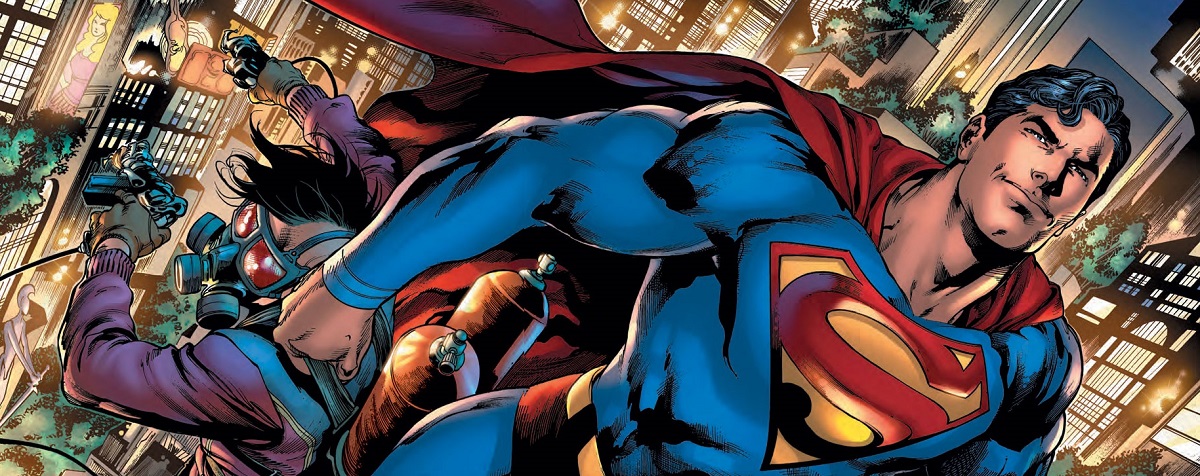
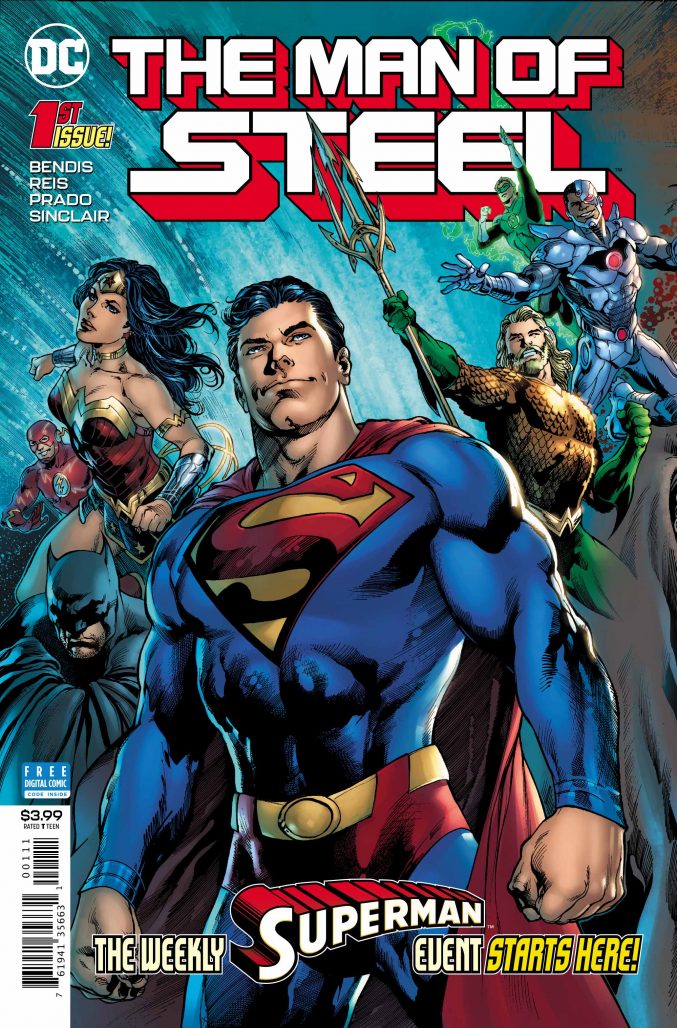
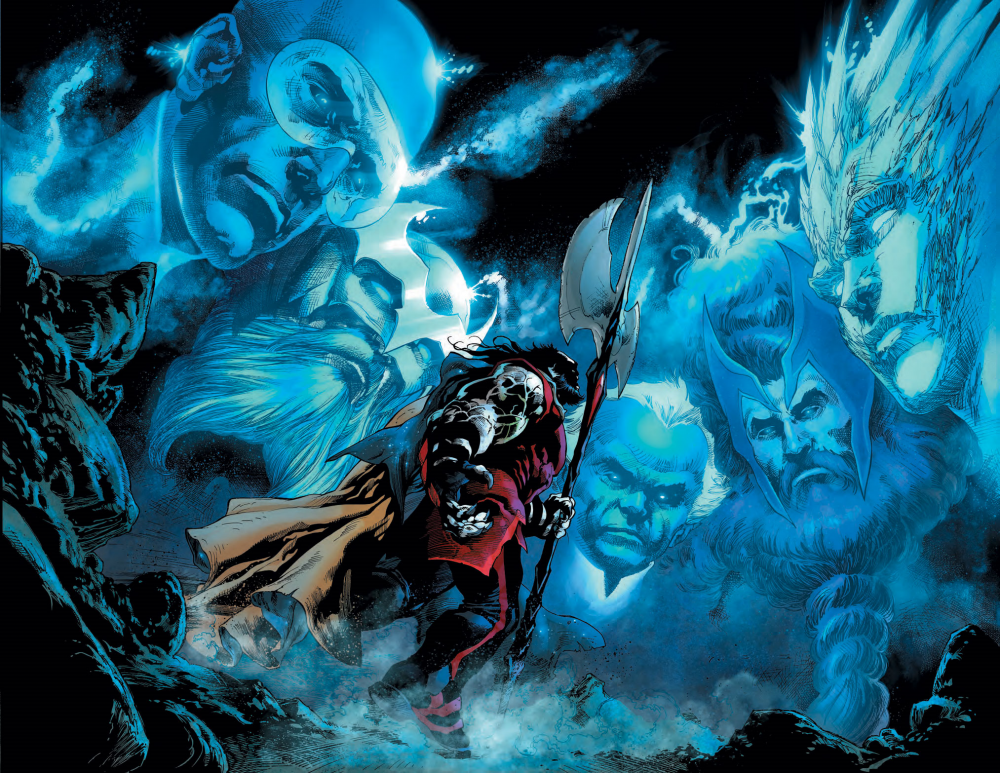
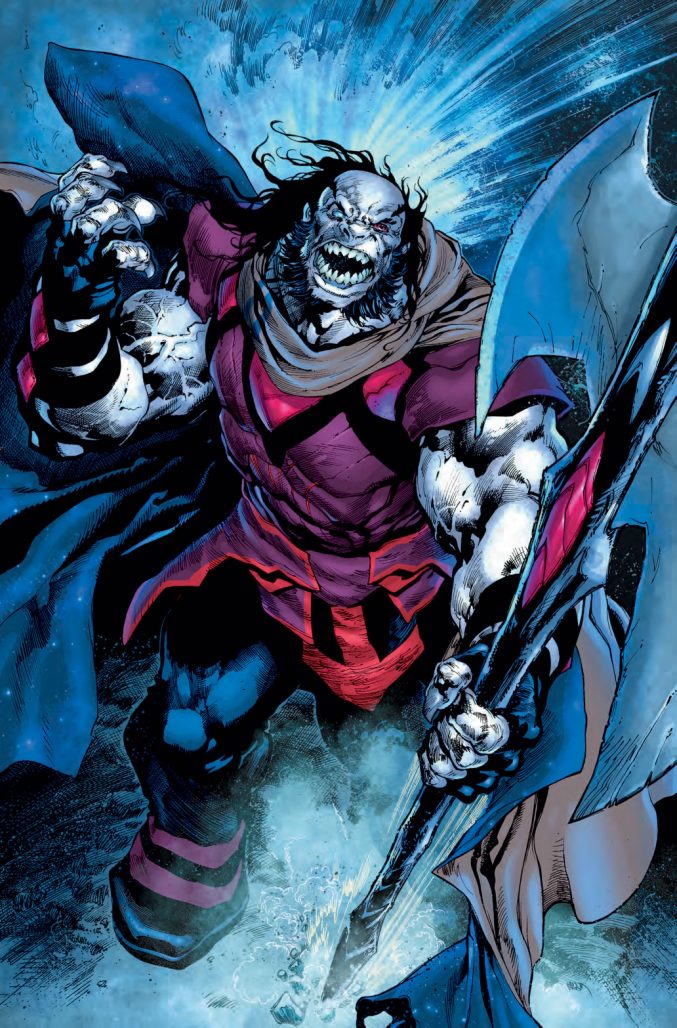
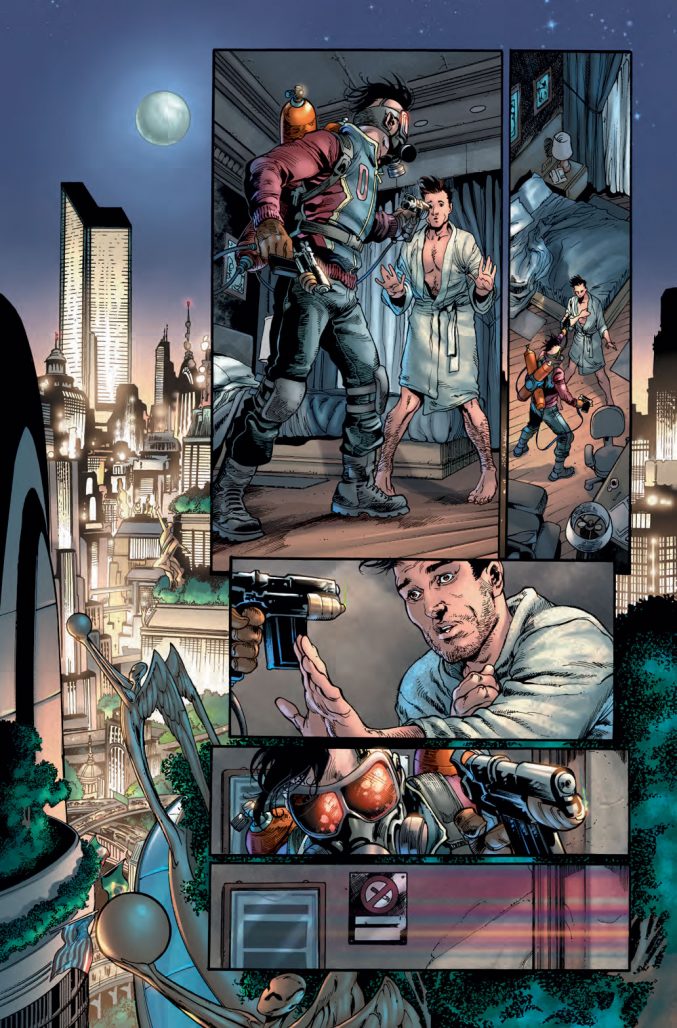
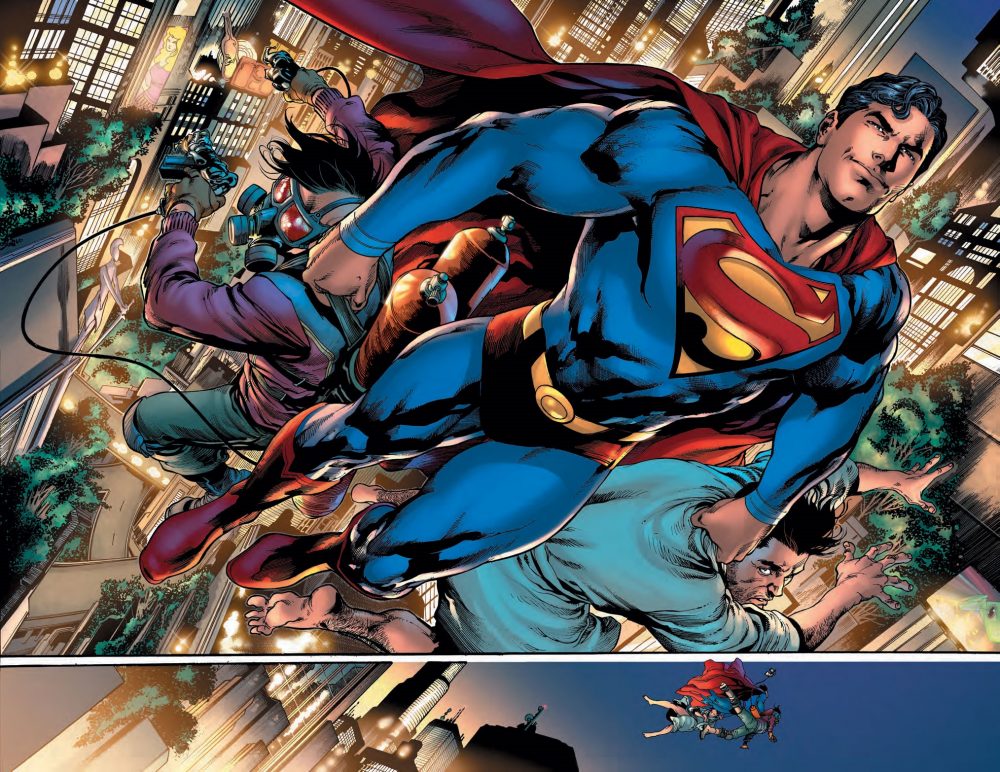
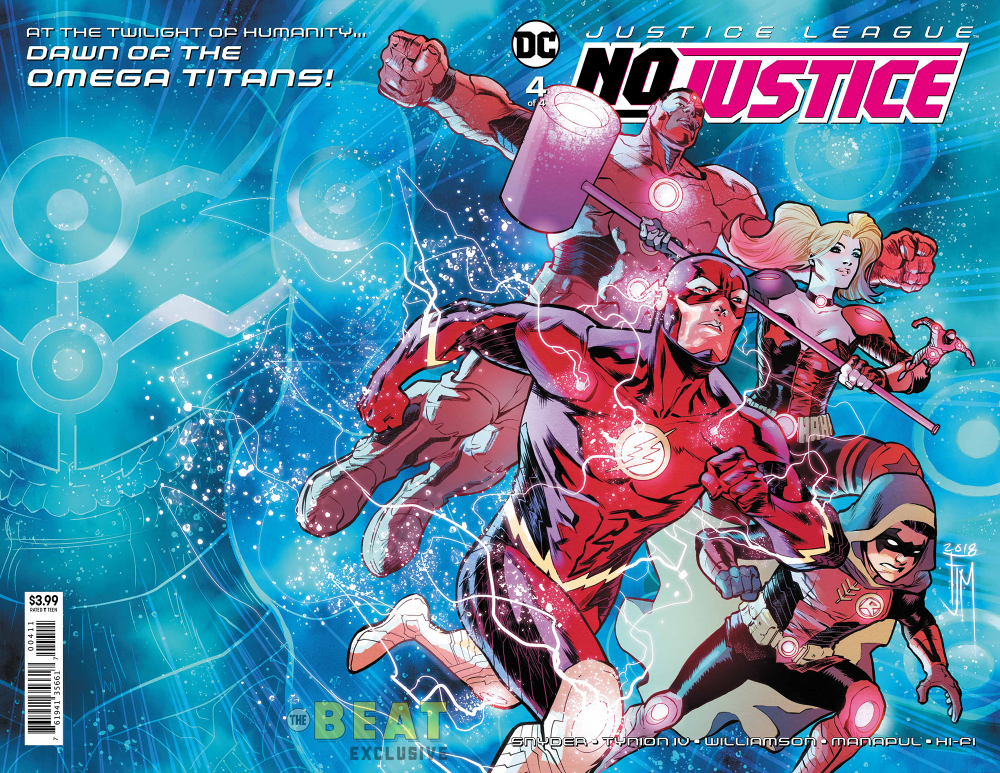
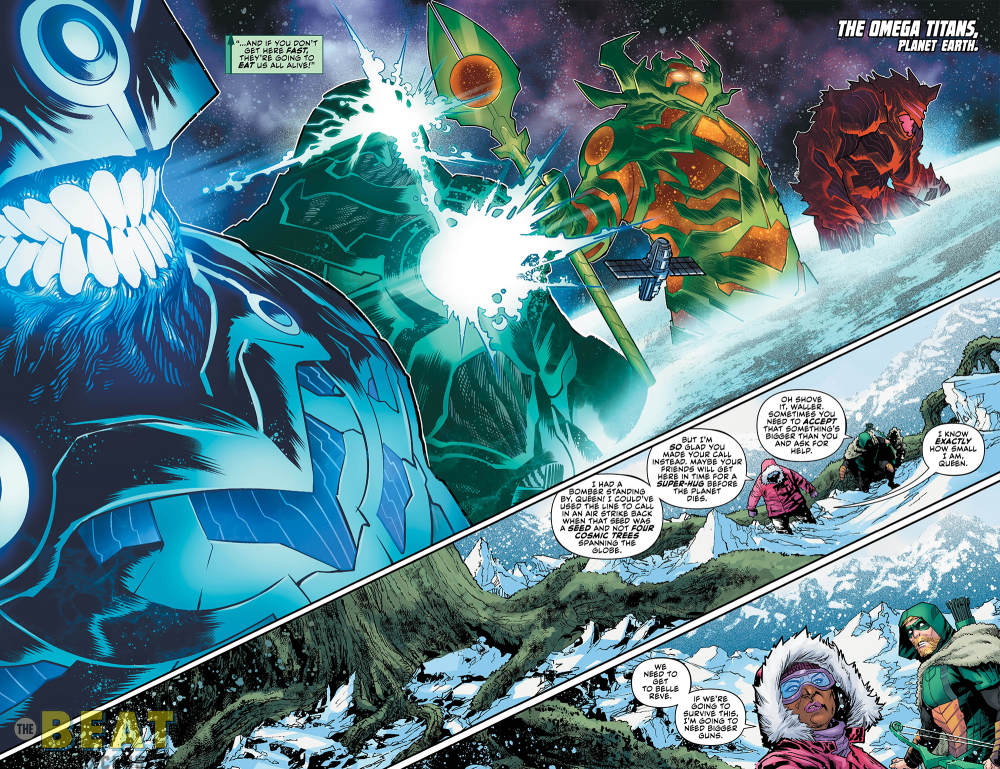
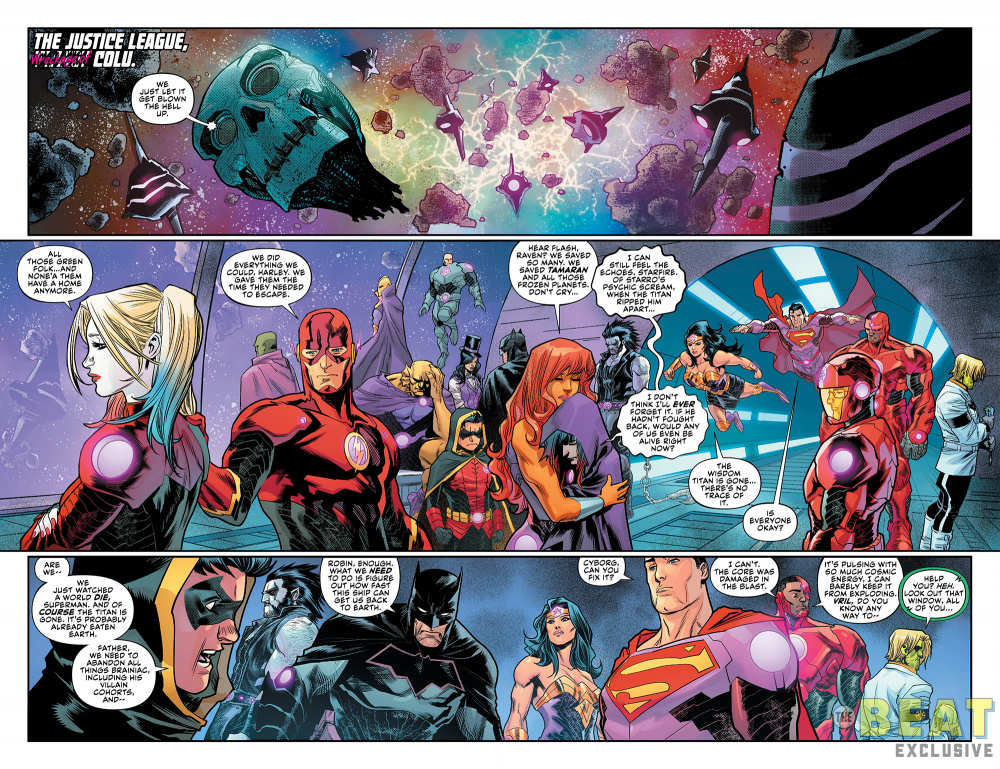






Nice art on Supes. Classic Superman costume cuts a nice figure, and you can see Reis in that figure work. I like the big villain pages though, with light and dark used well. Reminds me of Trevor Hairsine in a more painterly way. DC could do worse than to get Hairsine to pinch hit sometime.
Glad Supes is alright, gonna check this out and see for myself, regardless.
Great review, Alexander. You hit the nail on the head regarding Superman.
Comments are closed.